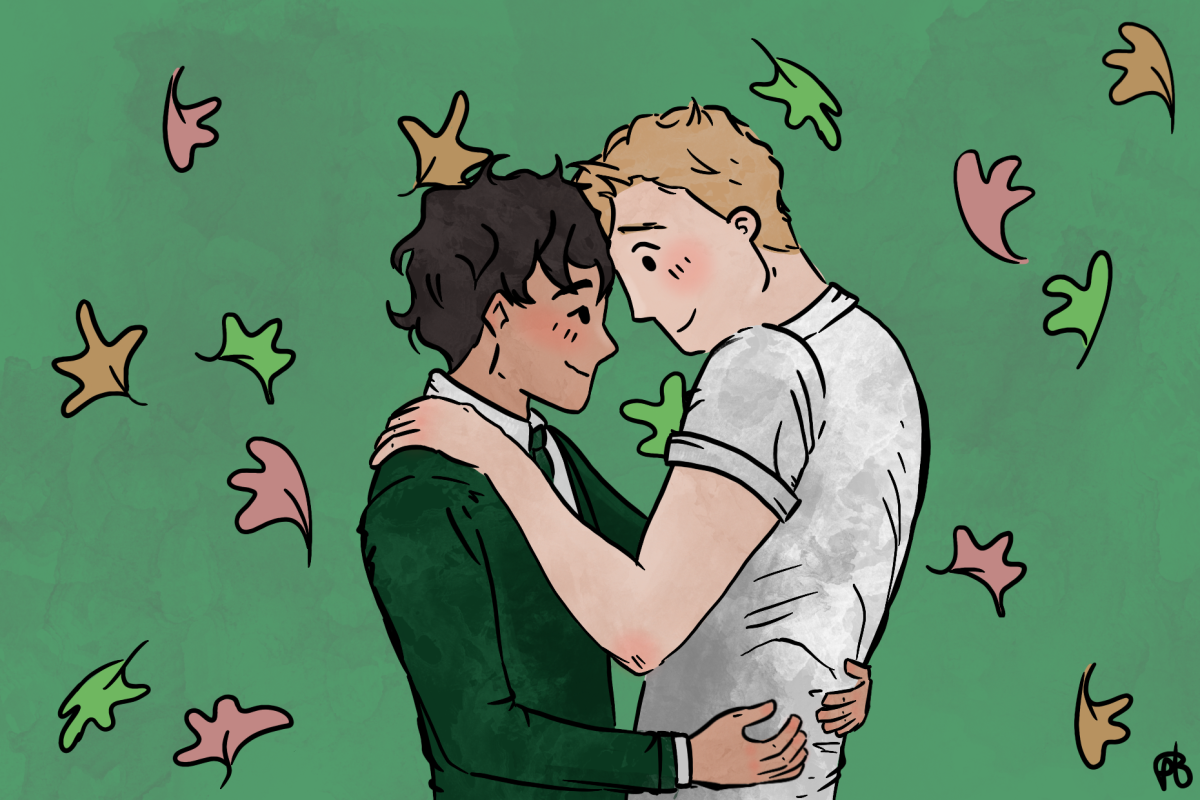As autumn settles in and the air turns crisp, it’s the perfect time to cozy up with a feel-good series. With the new season of Netflix’s Original “Heartstopper” out now, fans are reminded of how non-heteronormative love stories can be a reality for queer individuals.
“Heartstopper” follows the story of Charlie and Nick, two teenagers navigating the complexities of friendship, love and self-acceptance. Based on Alice Oseman’s graphic novel series by the same name, the show offers a gentle and joyous portrayal of queer romance—an experience that many LGBTQ+ individuals can relate to.
In contrast to the tragic coming-out stories and harsh depictions of homophobic bullying seen in shows like “Euphoria,” or films like “Call Me By Your Name,” “Heartstopper” offers a refreshing narrative that highlights love and acceptance. It’s a welcome reminder that positive representations of queer relationships can exist on screen.
While the more depressing narratives capture real challenges, they don’t paint the full picture. Queer love doesn’t always end in heartbreak; there are stories of joy, innocence and possibility that also deserve a place in mainstream media.
TV shows like “Heartstopper” offer something that often gets forgotten in LGBTQ+ representation– the reality of finding love and fulfilling relationships. These forms of media reflect the full emotional range of queer experiences, not just the painful ones. For LGBTQ+ viewers, these stories showcase how queer love is fun, innocent and full of happiness.
“It’s a breath of fresh air to see a show that centers on love and joy,” said Gabby Bautista, a textiles and apparel freshman at UT. “We’ve had enough stories of suffering. It’s time to show the world that queer love is beautiful and normal.”
Having accurate representation of the lives of LGBTQ+ individuals is crucial as it works toward challenging stereotypes, combating discrimination and promoting acceptance. However, not everyone wants to consume media that teaches a lesson or promotes diversity, even though such forms of media can serve the greater purpose of fighting adversity. Queer individuals already know these challenges because they have lived through them.
“Our high school was really homophobic, right? I was called slurs, I was bullied for it,” said freshman English major, Adam Rodriguez.
Representation in the media is more than just telling a story and trying to get a point across. It’s about seeing yourself through the experiences of other characters and feeling validated. When queer stories are told with care and intention, they not only provide hope for LGBTQ+ viewers, but also have the power to change the perspectives of those who may have never encountered queer narratives.
“For a lot of queer people growing up, there are few examples of who we could become or what life could look like as adults,” Rodriguez said. “Seeing queer stories in the media gives kids a vision of something joyful and hopeful to look forward to.”
Despite the progress being made, there are still significant barriers in the media industry that prevent the full spectrum of LGBTQ+ stories from being told. Many of these challenges stem from who is making decisions behind the scenes.
“The mainstream television industry is still dominated by straight, white, (cisgender) men and even though they may be supporting more LGBTQ+ stories, they don’t have the personal connection to tell the full variety of LGBTQ+ experiences,” said Curran Nault, assistant professor for radio, television and film at UT.
It is essential that educational institutions foster diversity and inclusion in their programs as they are training the next generation of filmmakers. Whenever you enter the film industry, part of the job is taking on the responsibility of telling the stories of people you may not identify with.
“Continuing to have inclusivity, not just in terms of gender, but sexuality and race and class and all the things in the film school,” Nault said, “But also going the extra step to kind of (put) pressure on the industry.”
There is a lot of hope about the future of queer media. Recent successes like “Heartstopper” have paved the way for more positive portrayals of LGBTQ+ characters, but it doesn’t have to stop there. Queer people deserve to have corny romance stories that make them believe in happily ever after, too.

































ALICIA MATTHEWS • Dec 1, 2024 at 12:50 pm
Very well written! I love the insight you provide to others that are not aware of the current influences in main stream media. Love, Alicia Matthews ❤️
Avery • Nov 27, 2024 at 9:09 pm
Well said and so necessary!! Thank you for your wonderful article Jewel